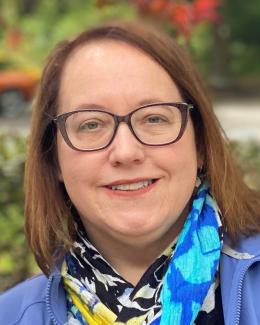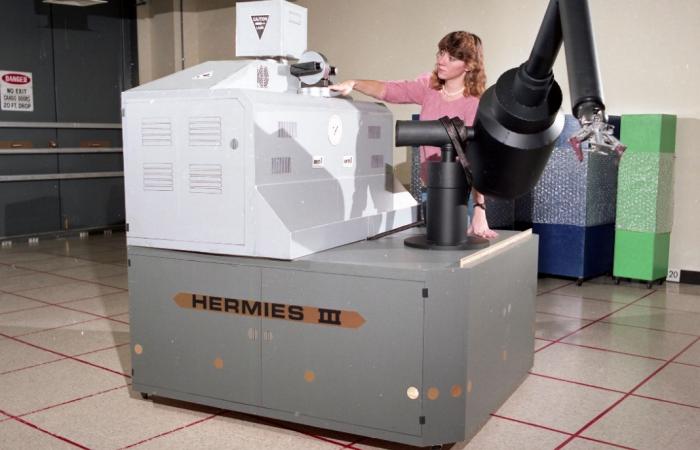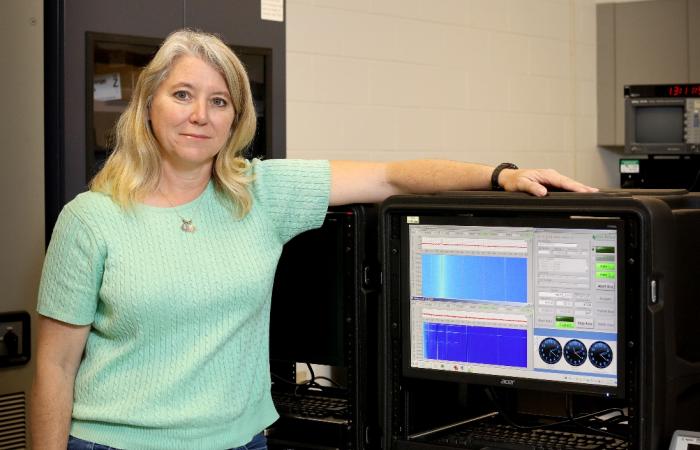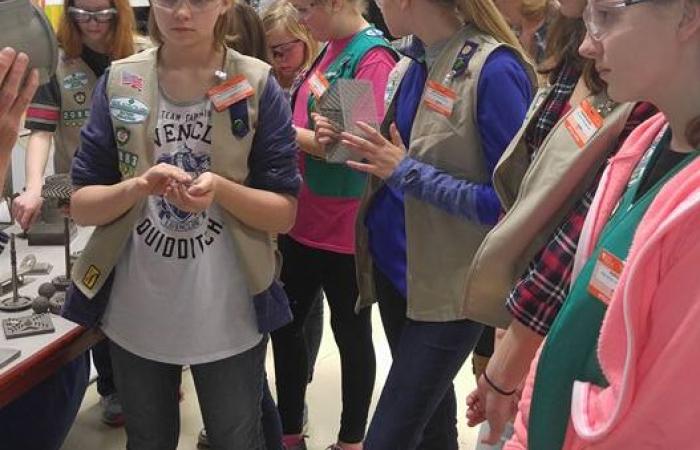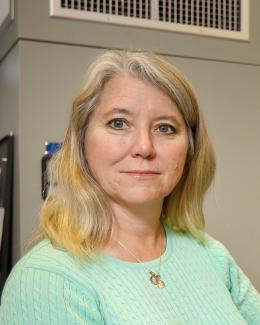September 22, 2017 – Michelle Baldwin’s engineering work has taken her from the public to the private sector and back again, although it was not certain early in her academic career that she would pursue a technical field at all.
Baldwin applies her technical programming expertise to several projects as a research and development staffer in the Electrical and Electronics Systems Research (EESR) division at the Department of Energy's Oak Ridge National Laboratory.
One of those projects, automating a metrology system for Pu-238 fuel pellet production for NASA’s deep space missions, was familiar territory for Baldwin, harkening back to the days when she worked on the Cassini space probe at the Y-12 National Security Complex in Oak Ridge, a separately managed facility near ORNL.
The ORNL metrology system is designed to ensure quality production of the fuel pellets while simultaneously reducing material handling by workers. Baldwin provided programming for the system and oversaw software quality assurance, verification, and validation.
It was a good introduction to the collaborative nature of research at the lab, with contributions from researchers in different fields: materials research, electrical engineering and robotics, nuclear science, and chemical engineering, she noted.
She is also involved in programming for data acquisition projects supporting energy security in the EESR Division and hopes to get more involved in data analysis.
Baldwin said she feels energized working at ORNL. “I love the satisfaction of seeing something work. And the people are great to work with, too. There is an atmosphere of trust and collaboration, and that is very motivating to me.”
Baldwin has always been interested in science and technology—her father is an industrial engineer. She excelled in calculus and physics classes at Morristown-Hamblen High School West in eastern Tennessee.
But in high school, she was also a dancer who dreamed of one day opening her own studio. When the time came to decide on an area of study in college, Baldwin’s guidance counselor advised her to pursue engineering since it would give her a chance to pursue her interest in math and would likely be more lucrative.
And so, she did. Baldwin found joy in “working the puzzles” involved in electrical engineering. As an undergrad at the University of Tennessee, Knoxville (UTK), she also worked in the cooperative engineering program at ORNL. One of her tasks at the lab was to assist with machine vision for the HERMIES self-powered, autonomous robot.
“BYTE magazine did a story back then in which my photo with the robot was used, and I became known internationally as the ‘friend of HERMIES,’” Baldwin laughed.
Baldwin graduated at the top of her class in electrical engineering at UTK. She then entered a graduate program in computer science at the university. But after about a year and a half of study, Baldwin had an epiphany. “I realized what I wanted to do, and that it did not require a PhD. So, I left with a master’s in computer science.”
Helping fuel deep-space missions
She went to work as a staff engineer at the Y-12 complex. There, she began to build her resume in technical programming and in ultrasonic non-destructive evaluation techniques, including image processing to evaluate girth welds on the ORNL-designed iridium capsules surrounding plutonium fuel pellets for the Cassini space probe. The probe launched in 1997 and has been in the news recently as it completed its final mission exploring Saturn and its rings.
Baldwin later worked at CTI, which was bought by Siemens. She created testing software and worked on the company’s development and manufacturing support for its PET scanners. As the PET technology reached maturation, Baldwin was ready for another challenge. She applied for a job at ORNL and noted that during her subsequent job interview, the scientists she was speaking with became very animated about the work they were performing at the lab. That passion for science was very attractive to the engineer, and a trait that has driven her work since being hired at ORNL in early 2016.
“It was a challenge to come on board at the lab and wrap my head around the fact that I’m in charge of my own destiny here,” Baldwin said. “For several years my world was market-driven—a little bit of research, but heavy on development and manufacturing support. Here it’s more research and maybe a little bit of development, and the deliverable is science. There is a freedom here to pursue your own interests and ideas that doesn’t exist anywhere else I’ve seen.”
Away from the lab, Baldwin is active as the co-leader of a local 6th-grade Girl Scout troop, whose members recently enjoyed a tour of the lab and an opportunity to speak with its scientists. Baldwin also takes the ponies she tends on her West Knoxville farm to local charity events to give buggy rides and has given harnessing demonstrations at the Great Smoky Mountains Heritage Center in Townsend, Tennessee. She and her family enjoy camping and kayaking together.
UT-Battelle manages ORNL for the DOE's Office of Science. The Office of Science is the single largest supporter of basic research in the physical sciences in the United States, and is working to address some of the most pressing challenges of our time. For more information, please visit http://energy.gov/science/. —By Stephanie Seay
